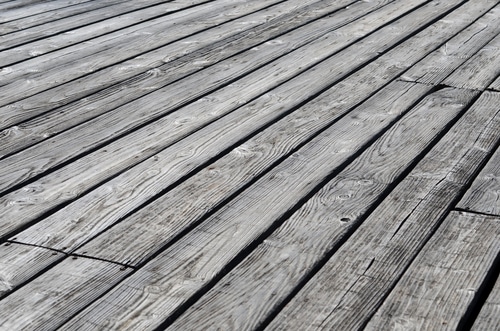Warping wood is not an uncommon problem for wooden decks given how exposed they are. Once you understand the causes of warped wood, preventing it can be much more manageable. It’s important that you understand the ins and outs of warped wood so you can ensure that your wood deck builder is giving you the best product for your Maryland home.
Why Does Wood Warp?
Warped wood occurs when different parts of a piece of wood, like those used to make decks, are exposed to changes in moisture content. This is most common when a board gets wet and parts of it dry faster than others, causing the drier parts to shrink at a different rate than the wetter areas. The varied levels of stress will eventually cause changes to the shape of the board which will most likely not lay flat again and need to be replaced.
What Affects Warping?
There are a number of different factors to understand when it comes to how the moisture content impacts your wood. All wood has an equilibrium moisture content when it is most “happy.” Size, grain, coating, and air temperature can all affect this equilibrium.
The thicker the wood, the longer it will take to absorb and release moisture. Boards with an exposed end grain will reach their equilibrium faster than other grain orientations due to the
heightened moisture exposure. If a piece of wood has a coating—like a paint, stain, or sealer—it will take much longer for the moisture to affect it because of this protective layer. Air temperature can also impact warping; warmer air helps wood reach its equilibrium sooner.
How Can I Prevent Warping?
The best way to prevent wood warping is for your Maryland wood deck builder to know their lumber and use the right materials for your deck. But you can make sure that they’re giving you the best service by understanding these tips:
Know Your Lumber
The type and grain of your lumber are two important things to keep in mind when choosing your lumber. Boards with straight grain patterns are less likely to warp, regardless of its species, because of the natural resistance to shrinking and warping the grain provides. Beyond grain, cedar is a very dense wood that is naturally resistant to moisture change. Similarly, redwood has a relatively straight grain pattern which works with its natural chemicals to prevent warping. Many composite woods are also less prone to warping and can ensure the longevity of your deck.
Store and Dry
Incorrectly stored lumber is more prone to warping than when it is properly taken care of. From stacking in a uniform manner according to thickness to placing these stacks flat on the ground to spacing out your stacks to allow for breath, there are plenty of tactics to help prevent warping.
Your lumber should also be dried from the get-go, something that your Maryland wood deck builder can address when selecting your wood. Once on site, the boards should still be stored in a shaded, cool, and dry environment to avoid warping. Humidity, especially, can have a detrimental impact on lumber.
Seal, Stain, or Paint
Because moisture leaves wooden boards best at their ends, sealing these ends will help prevent the lumber from oddly warping. Without it, the ends will shrink faster and eventually cause the board to warp. Stains and paints can also help act as a restrictive defense layer against moisture absorption.
North American Deck & Patio Will Protect Your Deck
The contractors at North American Deck & Patio are lumber experts that can make the right suggestions and treat your lumber with the best care to build your Maryland deck. We know the climate and we know the craft so you know you’ll be getting the best care for the best deck in the area. From selecting the best materials for your project to fighting humidity until the very end,
North American Deck & Patio has you covered. Give us a call today for a consultation to find out what lumber will best suit your needs.


